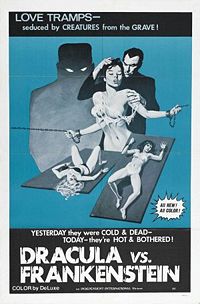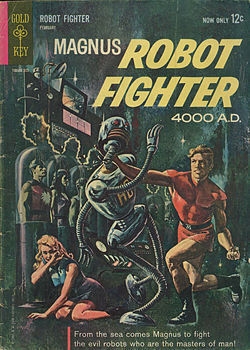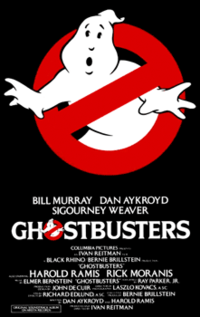Yes, I learned that, too—though back in my day, when we were less vigilant about sexism stalking our language, we cheerfully called them man vs. man, man vs. nature, etc. But I want to argue that this way of thinking about conflict doesn’t really tell us very much about fiction. I want instead to suggest to a different way of thinking about conflict.
Take a look at the following and decide for each which of the three types of conflict is represented.
A,)

B.)

C.)

Answers? Well my best guesses are: A.) monster versus monster. B.) man versus robot. C.) man versus the Stay-Puft Marshmallow Man.
It seems to me that this “three types of conflict” rule was really invented just so that we could think up exceptions. (And now, considering this, I remember an old song by the band Was (Not Was) that seemed to make the same point. Over a synthesized disco beat, a vocalist recited, “In my life there’s just three things: Man vs. Nature, Man vs. Woman, and Man vs. The Empire Brain Building.” You can listen to a bit of it here.
But I have another, more fundamental, problems with the “three types of conflict” rule: I don’t see what insight it gives us. First of all, there's usually not one type of conflict in a story but multiple conflicts. And even if we are able to categorize a story as containing one of these three types of conflict, why should we care? If we were to decide, for example, that the primary conflict in George Orwell's 1984 is person versus person, what does that reveal to us about the book?
I suggest that a better way to think about conflict in a story is this: conflict arises from a character wanting something he or she can’t (easily) have.
There are some types of stories that are obviously about the things that characters desire and the forces that stand in their way. Think for a moment about quest stories: Galahad seeks the Grail; Frodo wants to destroy the ring by casting it into Mount Doom. But perhaps all stories have something of a quest to them--all characters strive and want. And so I think that there are two interesting questions to ask ourselves about conflict:
- 1.) What does this character want?
- 2.) What stands in his or her way?






No comments:
Post a Comment